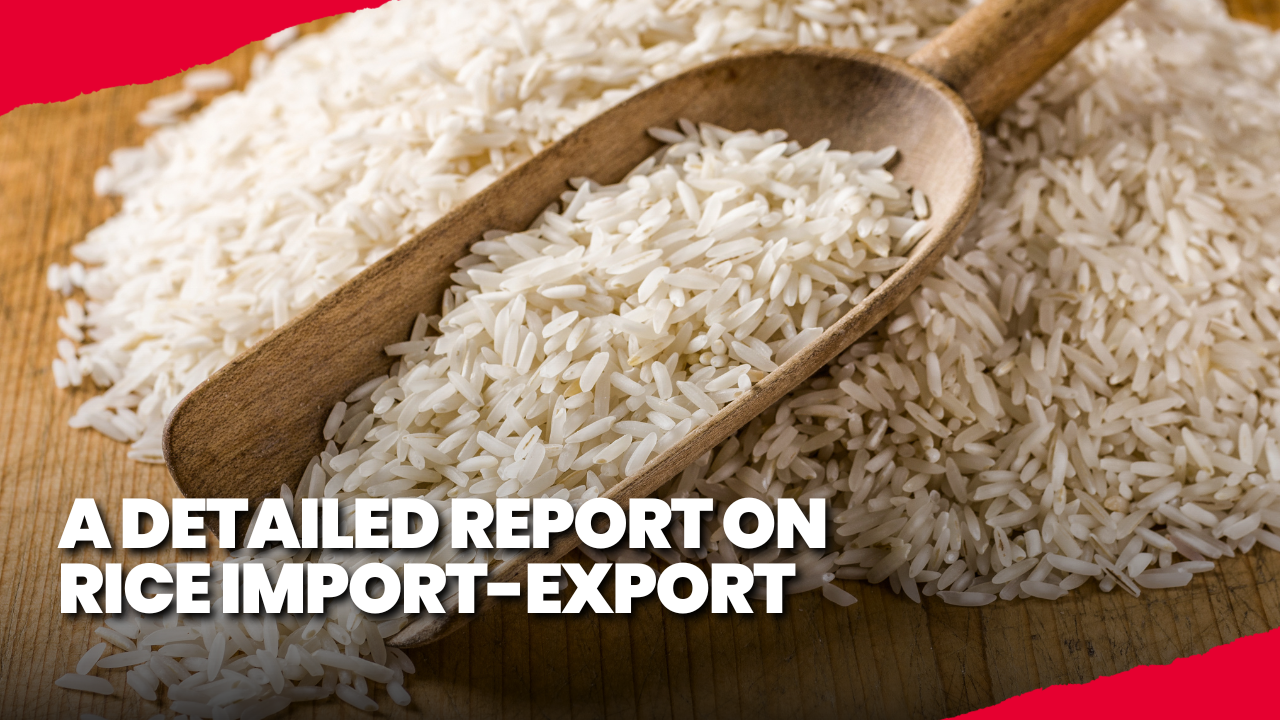
India stands as a leading producer of non-basmati rice, cultivating a wide spectrum of varieties that thrive across diverse climatic conditions. Common types such as Sona Masuri, Ponni, HMT, IR-64, and Swarna are esteemed for their distinct characteristics, including aroma, grain texture, and cooking versatility. Additionally, India is renowned for its Geographical Indication (GI) tagged varieties, which underscore regional authenticity and quality assurance. Here is a detailed information about Rice Import and Rice Export.
The non-basmati rice sector in India places significant emphasis on producing high-quality yields at commercially viable rates. Stringent quality control measures ensure that the rice meets international standards for grain size consistency, moisture content, and absence of contaminants. This commitment not only enhances the product’s marketability but also solidifies India’s reputation as a reliable supplier in global markets.
Internationally, Indian non-basmati rice enjoys robust demand owing to its diverse range of varieties and competitive pricing. It caters to a wide array of culinary preferences worldwide, underscoring its role as a staple food commodity in global trade. The sector’s ability to consistently deliver quality produce at economically sustainable rates further reinforces India’s position as a key player in the global rice industry.
India Facts and Figures
The country has exported 11116533.98 MT of Non-Basmati Rice to the world for the worth of Rs. 37804.48Crores/ 4570.06 USD Millions during the year 2023-24.
India likely to export almost 18 million tons of rice in 2024-25: USDA
- India will remain a leading player in the world rice market despite restrictions, according to a recent projection by the United States Department of Agriculture (USDA).
- It accounts for almost 18 million tons of Rice Export in 2024-25, which is around two million tons more than the previous year.
- India’s Rice Export will be a sizeable chunk of the global trade, but it will still be much lower than the record 22 million tons it exported in 2021-22, USDA said.
- On the world rice markets, it said the global rice outlook for 2024-25 is for rising supplies, trade, consumption, and ending stocks.
- Supplies increase year-to-year on record production at 527.6 million tons, which offsets the lower beginning stocks.
- The global crop is primarily driven by an increase in production in India, China, Bangladesh, and Indonesia. The global consumption is projected at a record 526.4 million tons, on the back of higher use in India, the Philippines, Indonesia, and Bangladesh, offsetting a reduction for China.
- “With the production and consumption gains projected in many of the same countries, global trade is forecasting up only slightly at 53.8 million tons, but still lower than levels of trade before India first imposed restrictions on rice exports in 2022,” USDA added.

Rice that are exported under Basmati rice category
- Sella Rice
- Steamed Rice
- Brown Rice
- Pusa Rice
- Parboiled Rice are the different types of
Rice that are exported under non-Basmati Rice category
- Parboiled Rice
- Broken Rice
- Sella Rice
- Swarna Rice
- Sona Masoori
Why India is The Largest Exporter of Rice in The World?
India stands as the world’s largest exporter of rice, a status achieved through a confluence of several important factors:
Fertile Land and Ideal Climatic Conditions:
India boasts a wealth of fertile lands, especially in the Gangetic plains, North-Eastern region, and Coastal areas – making it perfect for rice cultivation. Monsoon rains provide ample water supply, and the tropical climate is highly suitable for the growth of different rice varieties.
Extensive Variety of Rice:
Home to thousands of indigenous rice varieties, India has the capacity to meet a wide range of global customer preferences. The superiority and distinctiveness of certain varieties like Basmati, which is extensively exported, significantly boosts its global demand.
Scale of Production:
With agriculture forming the backbone of its economy, India is one of the largest cultivators of rice globally which enables it to export surplus quantity. The highest-yielding states, like West Bengal, Uttar Pradesh, and Punjab, significantly contribute to overall production.
Also Read This: A Detailed Report On Diamonds & Jewelry Import-Export
Government Policies:
Indian Government policies often promote rice cultivation through the provision of subsidized fertilizers, minimum support prices, irrigation schemes, and crop insurance. Export-friendly policies also aid in reaching a wider market globally.
Infrastructure and Technological Advancements:
India’s developing infrastructure and technological progress in the agricultural sector, like mechanization and modern irrigation techniques, have pushed up rice production over the years.
Low Production Cost:
Due to a large labor force available at a relatively low cost, the overall cost of rice cultivation in India often stays less compared to other countries, enabling competitive pricing in the international market. All of these factors together help India maintain its position as the largest exporter of rice in the world.
Countries Importing From India
- NEPAL
- PHILIPPINES
- BANGLADESH
- URUGUAY
- BRAZIL
- UZBEKISTAN
- VIETNAM
- CAMBODIA
- SPAIN
- OMAN
Importers Importing From India
- SEEDWORKS PHILIPPINES INC
- BAYER CROPSCIENCE LIMITED
- BIOSEED RESEARCH PHILIPPINES INC
- SYNGENTA PHILIPPINES INC.
- BAYER CROPSCIENCE INC
- SURYA AGRO
- SHIVSHAKTI AGRO AND FOODS
- OM AGRO PRODUCTS PVT LTD
- SHIVAM SHAKTI TRADING PVT LTD
To export RICE from India, you need to complete several documentation procedures, which may include the following:
- Import-Export Code (IEC)
- Sales Invoice
- Certificate of Origin
- APEDA Registration
- ISO Certification
- Bill of Lading/Airway Bill
- Phyto-sanitary Certificate: If required, obtain this certificate from the Agricultural and Processed Food Products Export Development Authority (APEDA)
- FSSAI License: The Food Safety and Standards Authority of India (FSSAI)
- Other documents required on the basis of clients /country’s demand






